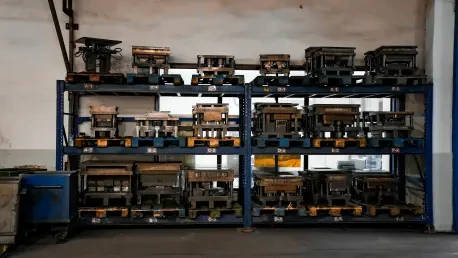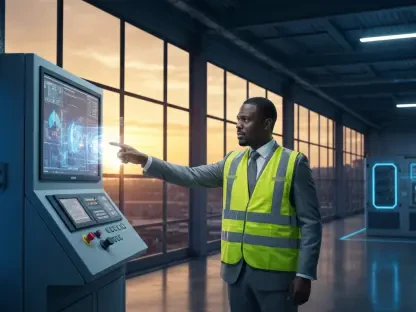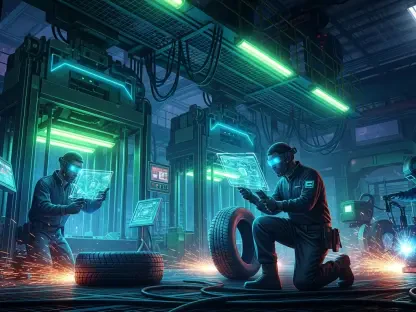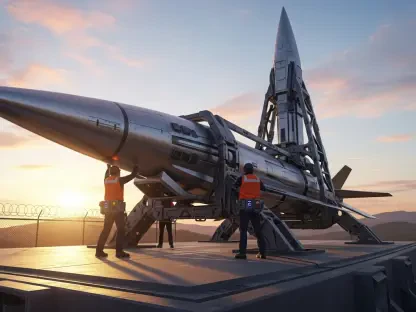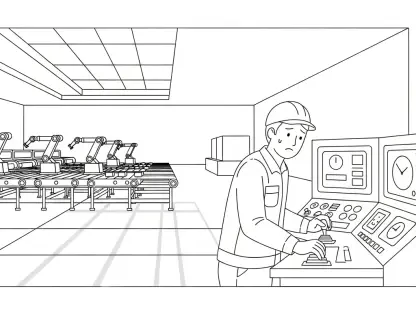Metal Additive Manufacturing (AM) stands at the forefront of a manufacturing revolution, with the global market projected to grow at a staggering compound annual growth rate of over 20% from 2025 to 2030, driven by the urgent need for customized, lightweight components across critical industries like aerospace, automotive, and medical. This transformative technology is redefining production paradigms by enabling the creation of complex geometries that traditional methods struggle to achieve. The focus of this analysis centers on the pioneering innovations by DMG MORI, a Tokyo-based leader in manufacturing technology, whose advancements are shaping industrial applications. This article delves into the evolving landscape of metal AM, explores real-world implementations, highlights expert guidance, and examines the future trajectory of this dynamic field.
Evolving Landscape of Metal Additive Manufacturing
Market Expansion and Technological Progress
The metal AM market is experiencing unprecedented growth, with industry reports estimating a surge in adoption rates as companies increasingly prioritize efficiency and customization. Recent data suggests that the market could exceed $10 billion by 2027, fueled by demand for high-performance parts and sustainable production practices. Key drivers include the push for reduced material waste and the ability to produce intricate designs that enhance product functionality, particularly in high-stakes sectors like aerospace where weight reduction is paramount.
Technological advancements are accelerating this trend, with methods such as Directed Energy Deposition (DED) and Laser Beam Powder Bed Fusion (PBF-LB) gaining significant traction. These processes allow for precise control over material properties, enabling manufacturers to tailor components for specific applications. The integration of digital tools and automation further enhances scalability, positioning metal AM as a cornerstone of modern industrial strategies.
A critical factor in this expansion is the focus on sustainability, as AM reduces the need for extensive raw material use compared to subtractive methods. This aligns with global efforts to minimize environmental impact, making the technology not just a performance enhancer but also a responsible choice for forward-thinking companies. The momentum behind these innovations signals a shift toward broader industrial acceptance.
Practical Implementations and Sector-Wide Adoption
At the forefront of metal AM applications, DMG MORI showcases cutting-edge solutions at Formnext in Frankfurt, Germany, held from November 18–21. Their LASERTEC DED hybrid 6-in-1 machines exemplify the power of combining additive and subtractive processes, such as milling and turning, into a single system. This integration facilitates the production of complex, multi-material components with enhanced characteristics like superior wear and corrosion resistance, vital for demanding environments.
Another highlight is the LASERTEC 30 SLM 3rd Generation machine, which refines PBF-LB technology with features like an interchangeable construction container. This innovation slashes downtime by allowing immediate replacement of finished containers, maintaining productivity while reducing setup times and shielding gas usage. With an expanded build volume, the machine supports larger parts or batch production, catering to high-volume needs across diverse industries.
The practical benefits of these technologies are evident in streamlined workflows and enhanced automation, which are critical for scaling AM in sectors like automotive and medical. By addressing bottlenecks such as cooling delays and material handling, these systems make metal AM a viable option for series production, demonstrating tangible value in real-world scenarios and driving wider industry adoption.
Expert Insights and Strategic Support in AM Adoption
DMG MORI’s ADDITIVE INTELLIGENCE consulting unit plays a pivotal role in bridging the gap between concept and execution for clients navigating the complexities of metal AM. This dedicated team offers tailored guidance, helping businesses optimize designs, integrate hybrid processes, and leverage digital solutions to gain a competitive edge. Their expertise ensures that companies can fully harness the potential of advanced manufacturing technologies.
The importance of such strategic support cannot be overstated, as the transition to AM often involves overcoming significant technical and operational hurdles. By providing end-to-end assistance, from initial planning to full-scale production, the consulting unit empowers clients to address challenges like process integration and material selection. This holistic approach is essential for ensuring that investments in AM yield measurable results.
A notable aspect of this support is the in-house production of customer parts, which serves as a testament to DMG MORI’s commitment to practical outcomes. Industry consensus underscores that success in AM hinges on pairing state-of-the-art equipment with informed guidance, a balance that this consulting framework achieves by aligning technology with specific business needs, fostering confidence in adoption.
Future Prospects of Metal Additive Manufacturing
Looking ahead, the trajectory of metal AM points toward greater automation, scalability, and material versatility, as exemplified by DMG MORI’s current offerings. Innovations in hybrid systems are expected to further integrate additive and subtractive methods, enabling seamless transitions between processes. This could unlock new possibilities for creating components with unprecedented precision and efficiency, reshaping production landscapes.
Material compatibility is another frontier, with ongoing developments aimed at processing challenging metals like copper, known for their reflectivity. The ability to handle such materials, alongside graded transitions for enhanced functionality, promises to expand AM’s applicability. Coupled with cost reductions and efficiency gains, these advancements could position AM as a mainstream solution, though challenges like regulatory compliance and workforce skill gaps remain.
The broader implications for industries are profound, as AM has the potential to revolutionize supply chains by enabling on-demand production and reducing reliance on traditional inventory models. However, risks such as high initial technology costs and the need for standardization must be addressed to ensure sustainable growth. Balancing these opportunities and obstacles will be crucial for the long-term impact of metal AM on global manufacturing.
Closing Thoughts
Reflecting on the insights gained from DMG MORI’s showcase at Formnext, it becomes clear that their LASERTEC DED hybrid machines and LASERTEC 30 SLM 3rd Generation systems mark a significant leap in overcoming traditional manufacturing constraints. The strategic support from the ADDITIVE INTELLIGENCE unit also stands out as a key enabler for businesses adopting these technologies. Looking back, these contributions highlight a pivotal moment in industrial innovation.
Moving forward, industries are encouraged to explore partnerships with technology leaders to navigate the evolving AM landscape. Investing in workforce training to close skill gaps emerges as a vital step, alongside advocating for standardized regulations to streamline adoption. These actionable measures promise to unlock the full potential of metal AM, ensuring that its transformative power continues to reshape production for years to come.
